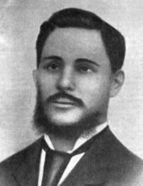

While Francisco Adolfo de Varnhagen's work centred around the State as the central character, Capistrano de Abreu focused on Brazilian society. This interest was shared by the entire scientific generation and is reflected in its key figures, such as Silvio Romero, Euclides da Cunha, Joaquim Nabuco, and Rui Barbosa. After addressing the challenge of reorganising the country post-independence, including establishing the state and political framework, this generation, despite its individual differences, recognized the societal issues at hand: the end of slavery, immigration, miscegenation, and progress — a magical concept that they all regarded as the metasynthesis. From this focus on society resulted Capistrano's use of categories such as consensus, natural economy, urban economy, patriarchy, "emotion of superiority", "emotion of inferiority", "military society", and "industrial society". Initially, these concepts were influenced by pure positivist or evolutionist thought, but he later began to naturalize them whenever they were supported by documentary evidence. He also included additional categories based on his own documentary experiences, which were not merely created by him: piabirus, flags, expeditions, municipalities, crafts, and leather civilization.
The emphasis on society was complemented by another characteristic aspect of historical analysis of his time, which would soon evolve with the emergence of the university system. It pertains to the awareness of the interplay between historical and geographical factors. In Capistrano de Abreu, we can still observe the clear complementarity between the two aspects, that the increasingly specialised approaches in European and North American universities would render airtight, separated by their respective methodologies and the strict boundaries set on topics of time and space. His awareness of geographical conditions, though not deterministic, led him to emphasise the physical location of Portugal ("destined for maritime life") and São Paulo ("driven toward the hinterland"), noting the presence of the caatinga instead of forests, which favoured cattle expansion in the northeast, and identified the segregation of three geopopulational areas in the colony — sea, forest, and hinterland. He also pointed out how the state of Maranhão was formed due to the challenges of navigation between Salvador and São Luís, among many other examples. Other anthropogeographical aspects, as he referred to them, included the Portuguese use of indigenous paths — the piabirus — and the significance of the occupation of indigenous tribes across multiple territories. To clarify this, he created a classic depiction of the indigenous population in Brazil, taking into account the distribution of the Tupi tribes and other nations, while also emphasising their relationships with the Caraíbas in the northern part of the colony. For his conclusions, he compared colonial documents with contemporary ethnographic research conducted by figures such as General Couto de Magalhães and his correspondent Karl Von den Steinen.
This work is financed by national funds through FCT - Foundation for Science and Technology, I.P, in the scope of the projects UIDB/04311/2020 and UIDP/04311/2020.
